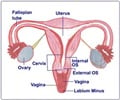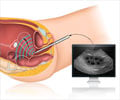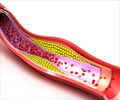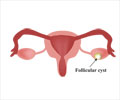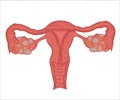Normal Physiology & Mechanism
Mechanism of polycystic ovarian syndrome due to hormonal imbalance.
The hormones in our bodies are regulated by two regions of the brain – the hypothalamus and the pituitary gland. Hormones are chemicals that are secreted in miniscule amounts and a very small imbalance in their secretions can lead to different problems that can manifest as diseases. Understanding the cause of polycystic ovaries requires some basic understanding of how the hormones are normally regulated.
In the normal state
| Hypothalamus secretes gonadotropin-releasing hormone (GnRH) |
| | |
| GnRH releases luteinizing hormone (LH) and Follicle-Stimulating Hormone (FSH) from the pituitary gland |
| | |
| Acts on certain cells of the ovary |
| | |
| Bring about maturation of the follicle and results in release of eggs |
In polycystic ovaries syndrome, the cycle is disturbed. Evaluation of blood serum levels typically reveals elevated LH levels and normal or low FSH levels. Patients also have increased levels of free estrogen (primarily estrone and estradiol) and testosterone levels.
The lack of follicle maturation and the inability to ovulate are likely caused by low levels of follicle stimulating hormone (FSH) , and higher-than-normal levels of androgens (male hormones), produced in the ovary.




